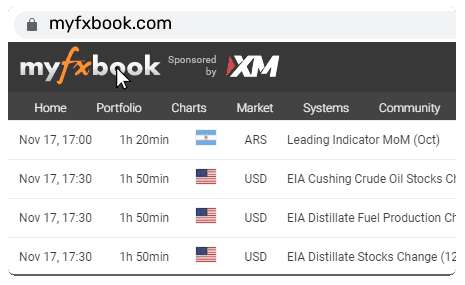- Home
- Community
- Erfahrene Trader
- Why Do Most Traders Fail When Trading the News?
Advertisement
Why Do Most Traders Fail When Trading the News?
In the financial markets, news trading is a strategy that attracts a lot of interest. Major events such as economic data releases, central bank interest rate decisions, corporate earnings reports, and even geopolitical news can significantly impact the prices of financial assets such as stocks, currencies, commodities, and cryptocurrencies.
At first glance, the idea seems simple – just follow the news and trade based on its impact. However, in reality, most traders fail when applying this strategy. Below are the key reasons why trading the news is not as easy as it seems and why it can be a double-edged sword for retail investors.
1. The Market Reacts Extremely Fast – Retail Traders Are Always One Step BehindIn today’s technological era, major financial institutions, hedge funds, and high-frequency trading (HFT) algorithms can access news within milliseconds and execute trades at lightning speed, making it impossible for human traders to keep up.
When a major news event is released, institutional investors have pre-programmed algorithms that analyze the data and execute trades instantly. This causes asset prices to shift rapidly, leading to high volatility the moment the news is published.
Meanwhile, retail traders typically get their news from financial websites, social media, or trading platforms. By the time they process the information and place a trade, the price may have already moved significantly or even reversed, resulting in entries at unfavorable price levels.
2. The “Buy the Rumor, Sell the News” PhenomenonOne of the common market principles is “buy the rumor, sell the news.” This means that the price of an asset often reflects the news before the actual event occurs.
For example, if there are rumors that the U.S. Federal Reserve (Fed) will raise interest rates, large investors may have already bought the U.S. dollar beforehand. When the official decision is announced, prices may not rise further and could even decline as investors begin taking profits.
This phenomenon leads to retail traders making the mistake of assuming that good news will push prices higher, only to see the market reverse once the news becomes official.
3. High Volatility and the Risk of Stop-Loss HuntingMajor news events, such as interest rate decisions, U.S. Non-Farm Payroll (NFP) reports, Consumer Price Index (CPI) data, or corporate earnings announcements, can cause extreme market volatility.
During news releases, prices often move rapidly, forming long candlesticks with large wicks, triggering stop-loss orders before establishing a clear trend. This happens due to:
Sharp price swings in both directions before the market determines its actual direction.Market makers and large institutions triggering stop-loss orders to accumulate liquidity before pushing prices in the intended direction.As a result, many traders get stopped out even if their initial analysis was correct.
4. Market Reactions Are UnpredictableA common mistake among traders is assuming that positive news will make prices rise, while negative news will make prices fall. However, market reactions are not always that straightforward.
For example, if a country’s GDP data shows strong growth, traders might expect its currency to rise. However, if the market had already anticipated this data or if other factors such as political risks or monetary policy concerns exist, the currency might still decline.
Additionally, market reactions can be counterintuitive due to investor sentiment, expectations, or institutional strategies. This unpredictability makes news trading highly challenging and risky.
5. Emotional Trading and Lack of DisciplineNews releases often bring excitement, fear, or panic to the market. When prices move rapidly, many traders fall into FOMO (Fear of Missing Out) and place trades without a clear plan.
As prices fluctuate quickly, traders may panic and exit trades too early or, conversely, hold onto positions for too long, hoping for a price reversal. These emotional decisions often lead to significant losses.
Successful news trading requires high levels of discipline and emotional control, which many inexperienced traders lack.
How to Trade the News More Effectively?Although news trading carries high risks, traders can take the following steps to improve their chances of success:
Avoid trading immediately after the news release. Instead, wait for the market to stabilize and confirm a clear trend before entering.Combine news analysis with technical analysis to find optimal entry points rather than relying solely on news events.Implement strict risk management, setting reasonable stop-loss levels and not risking too much capital on a single trade.Observe the market’s reaction before the event to determine whether the news has already been priced in, avoiding the "buy the rumor, sell the news" trap.Develop strong trading psychology to resist emotional decision-making during periods of high volatility.ConclusionAt first glance, news trading appears to be a quick way to profit, but in reality, it is a complex and highly risky strategy. Most traders fail because the market reacts too quickly, news is often already priced in, and emotions lead to poor trading decisions.
Without a solid strategy and strong risk management, news trading can become the fastest way to lose money. Therefore, traders must equip themselves with knowledge, discipline, and experience to avoid common pitfalls when trading the news.












